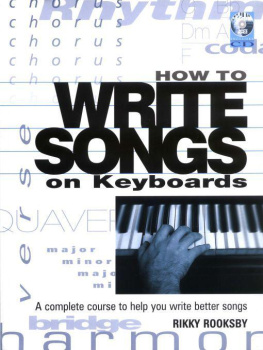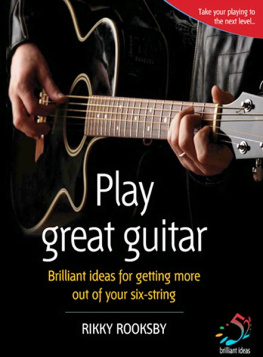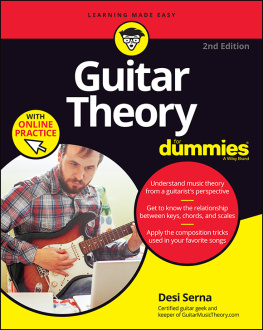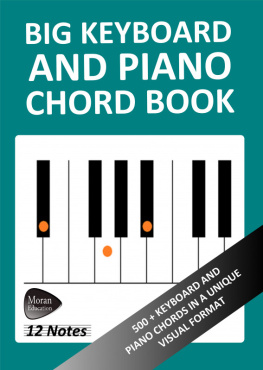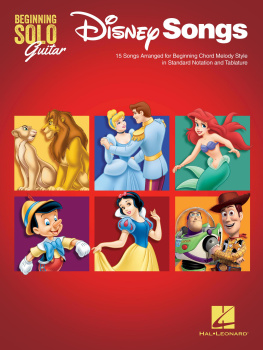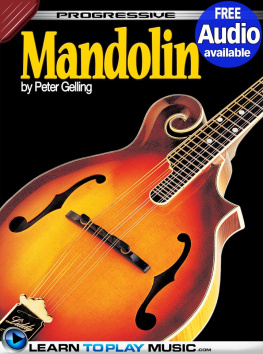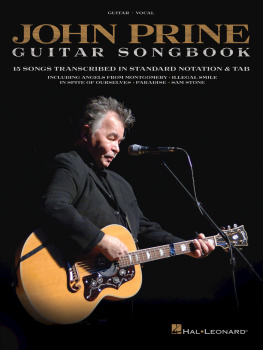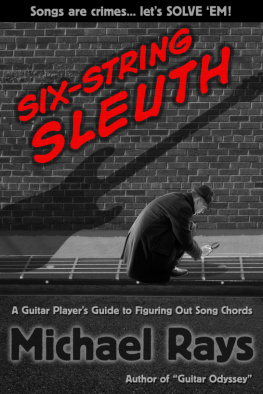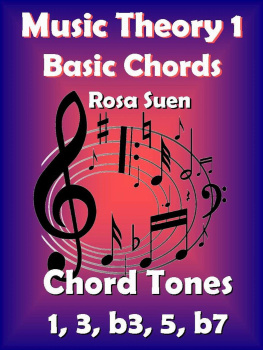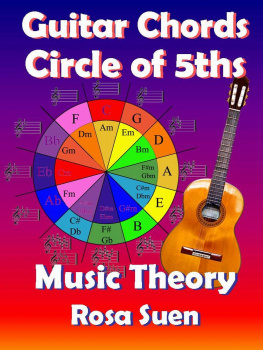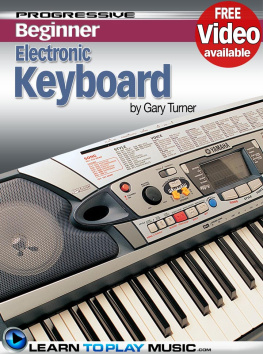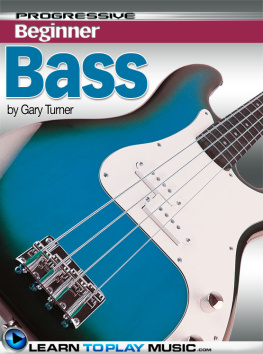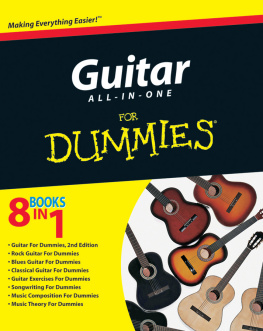Table of Contents
To Lawrence G. James, mentor and friend, on the occasion of his retirement
A BACKBEAT BOOK
First edition 2005
Published by Backbeat Books
600 Harrison Street
San Francisco, CA 94107, US
www.backbeatbooks.com
An imprint of The Music Player Network CMP Media LLC
Published for Backbeat Books by Outline Press Ltd,
2A Union Court, 20-22 Union Road, London SW4 6JP, England
www.backbeatuk.com
ISBN 13: 978-0-87930-862-9
ISBN 10: 0-87930-862-1
Text copyright 2005 Rikky Rooksby; volume copyright 2005 Outline Press Limited. All rights reserved. No part of this book covered by these copyrights may be reproduced, copied or transmitted in any manner at all without written permission, except for brief quotations in articles or reviews where the source should be made clear. For more information contact the publishers.
EDITOR: Paul Quinn
DESIGN: Paul Cooper Design
Printed by Colorprint Offset Ltd (Hong Kong)
050607080954321
Preface
The pianoforte is the most important of all musical
instruments: its invention was to music what the invention
of printing was to poetry.
George Bernard Shaw
Sit yourself down at the piano
Just about in the middle,
Put all your fingers on the black notes anyway you want to.
Graham Nash, Black Notes
I need to touch music as well as think it, which is why I have
always lived 1 next to a piano.
Igor Stravinsky
He who plays the piano keeps sane.
Italian proverb
T he simplest way to write a song is to put some chords together and then sing some words on top. This book - from the same stable as the best-selling How To Write Songs On Guitar - shows you how to find and link chords on a keyboard. It explains how to play chords with simple shapes, and how to get inspiring new sounds by altering these shapes on the basis of physical patterns rather than theory. It reveals which chords go well with each other and how to find them on a keyboard. It describes how to construct the renowned three-chord trick. Section by section, How To Write Songs On Keyboards introduces the four, five and six-chord song, basic structure, hit-making techniques like the turnaround, and many other tips to get more from your creative ideas.
You dont need to read music. Everything is laid out in easy-to-read diagrams. You also dont need to be a keyboard player. The beauty of using a keyboard for songwriting is that just pressing a few keys can get you started. This book is ideal for guitar players looking to expand their creativity by exploring a new instrument. If you regularly compose songs on guitar you can find youre going around the same chords all the time, sometimes without realising it. Writing music on a different instrument is a good way to stimulate new ideas. Some ideas natural to one instrument wont occur to you on another.
Songs of a kind you never knew you could write are waiting among the shapes and progressions in these pages.
Rikky Rooksby, 2005
Introduction
The first thing to point out is that How To Write Songs On Keyboards is not a book about how to play keyboards.
It will not tell you how to read keyboard music, nor how to hold your hands correctly, nor how to practise scales. It wont tell you how to get your left and right hands to work independently of each other, or any of the other techniques covered in a keyboard tutor book. If you want to concentrate on building technique to play piano music, look for one of the many instruction courses available. How To Write Songs On Keyboards is a book with a different focus: the keyboard as a source of song ideas. It does something new.
Its a book about creativity. And its as much for guitarists and singers as it is for keyboard players.
So it doesnt matter whether you already play keyboards and would like to write a song, or if you usually play guitar and fancy getting new ideas from another instrument.
Music is about inspiration and feeling. Unfortunately these are not always easy things to come by. A songwriter with even a small amount of experience soon realises that although it would be terrific to be guaranteed a classic song every time you sat at the keys, or picked up the guitar, it doesnt happen that way. Im often asked if there is anything a songwriter can do to summon inspiration. Well, one method is to try writing a song on a different instrument to your usual one.
Why keyboards?
From time to time most songwriters want to compose a different type of song from the kind they usually write. Changing instrument is a way of doing this. You might think lack of technique would be limiting on an unfamiliar instrument, and thats true up to a point. But unlike many instruments, getting notes from a keyboard is easy - even a cat walking over the keys can do it. Compare the ease of pressing a key to the effort involved in trying to produce a single note from a saxophone or flute, or playing even a half-barre F chord on the guitar when youre a beginner.
With some instruments you have to practise hard to get technically good enough to make a pleasing sound. Woodwind players have to learn how to breathe, how to direct air, how to handle the reed. String players have to learn to bow, and to accurately pitch notes on a fingerboard where there are no frets. In this sense at least guitarists have it easy - they know exactly where to put their fingers to get an F# major chord. But that still leaves the problem of making sure those fingers are correctly positioned so they dont create a buzz or stop an adjacent string from sounding. And if, as is true with F#, the chord requires several strings to be held down with a single finger - a barre - that can take months to get right, even if your guitar has a decent action so the strings are not too far off the fingerboard. So on the guitar an F# chord is something most beginners cant play. But anyone can go to a piano - whether its electronic, a battered old upright, or a baby grand - and hold down an F# major, as long as they know which keys to press. On a keyboard its no harder than holding down a C major.
For the purposes of this book a keyboard means any instrument with a piano-like keyboard of at least two complete octaves (ie 16 white keys in width), preferably three octaves (24 white keys in width). This could be an acoustic piano, an electric or digital piano, an organ, or a modern synthesiser/workstation.
Regardless of the tone(s) the instrument produces, the notes are laid out flat in front of you in white and black keys. This layout has its own special qualities in terms of the way it invites the notes to be held and combined. Chord and note relationships are given a visual quality quite different to the guitar, for example.
Beginners luck: finding the magic in simple things
On the keyboard, ignorance can sometimes be a songwriters bliss. Paradoxically, lack of technique can lead you to find the magic in simple things that might be overlooked by someone with greater proficiency. Its a version of beginners luck. Something thats familiar and not necessarily magical to an expert might be magical to a beginner - and from the excitement of that discovery can come creativity.
Many songs are composed in an intuitive way. People without any technical knowledge of music put chords together that sound good to their ears in order to make up songs. Theres nothing wrong with that. The history of popular musics greatest moments is crammed with performers who knew almost nothing about the technical side of what they were doing. A combination of inspiration, creative drive, sheer luck (and sometimes genius) led to truly great songs. Sometimes this happened because writers messed about on an instrument they didnt normally play. And I would bet that the greatest number of these moments happened when people who werent keyboard players sat down and pressed their fingers to those black & white keys.

